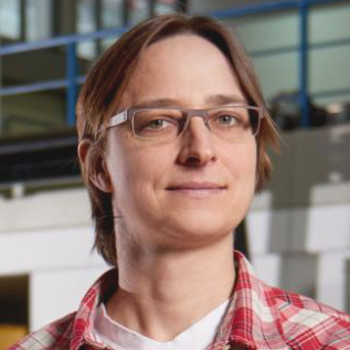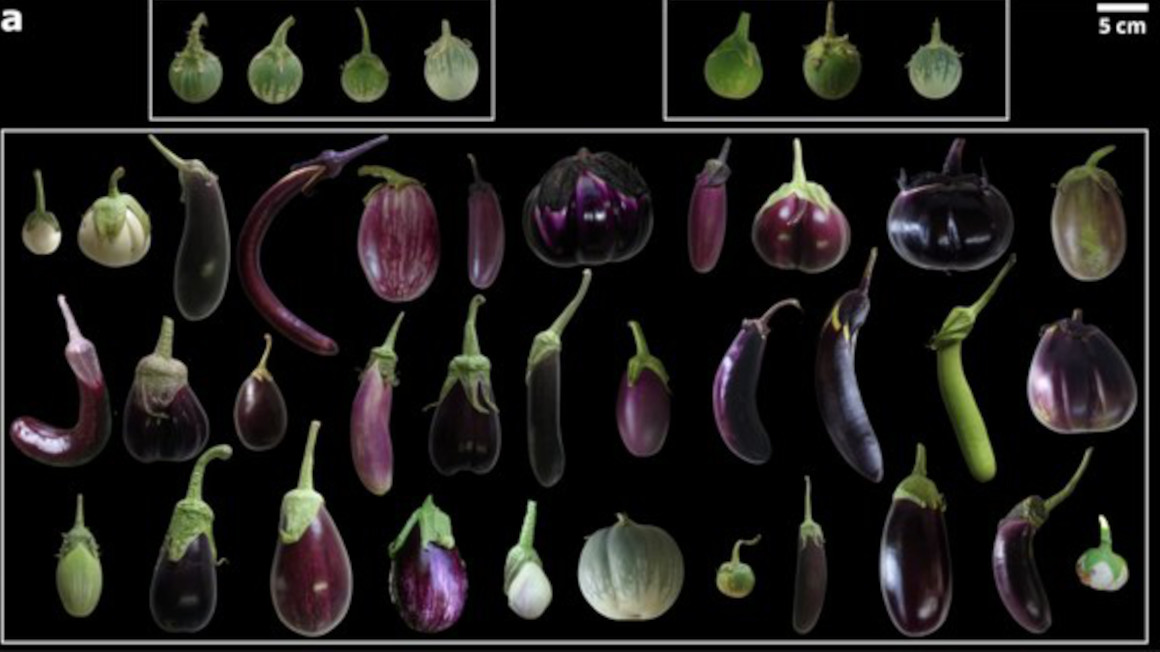Mediator between nature and technology
Cornelia WeltzienOccupation:
Graduate agricultural engineer
Position:
Head of the Agricultural Engineering Department at the Leibniz Institute for Agricultural Engineering and Bioeconomy; Head of the Agro-Mechatronics Department at TU Berlin

Occupation:
Graduate agricultural engineer
Position:
Head of the Agricultural Engineering Department at the Leibniz Institute for Agricultural Engineering and Bioeconomy; Head of the Agro-Mechatronics Department at TU Berlin

Putting technology in the service of nature has become a life’s mission for Cornelia Weltzien. As an agricultural engineer, she is working to utilise the full spectrum of technologies in new and complex systems that are aimed at conserving soil and facilitating the work of farmers.
From ship machinery to tractors and drones, Cornelia Weltzien has always considered herself an enthusiast of technology. Today, the graduate agricultural engineer feels most at home in the fields of mechanics, hydraulics or electronics. As the daughter of an immunobiologist, a sense of curiosity is part of the family tradition. Weltzien thinks she may have inherited her affinity for technology from her grandfather. “It was always like this. I was the one repairing my brothers’ bikes – not the other way round!”
Taking the long road
Since October 2015, Cornelia Weltzien has headed the Department of Agricultural Engineering at the Leibniz Institute for Agricultural Engineering and Bioeconomy, as well as the Department of Agro-Mechatronics at the Technical University of Berlin. Born in the US and raised in Freiburg, the researcher took a somewhat indirect route to the field of agricultural engineering, but feels that her scientific life has always been strongly target-oriented.
During her school days, her interest in plant cultivation was kindled by a beginners’ course at a cultivation farm. But before her scientific life could begin in earnest, she headed out on the ocean waves for two years at the age of just 21, eventually graduating as a naval mechanic in 1993. “Here too, my interests were predominantly on the technology side of things. I also wanted to travel the world. After a year in Honduras and six months in the US, my wanderlust was still not quenched.” According to Weltzien, she turned her back on the nautical life because she was “not a tried-and-true water rat,” and preferred to have solid ground under her feet.
Placing technology in the service of nature
Weltzien studied agricultural engineering at the Technical University of Cologne until 1999, while also working as a tractor developer for agricultural technology companies, and even sat behind the wheel during the testing of prototypes. After a course in mechanical engineering at Braunschweig University of Technology, in 2008 she joined the Institute for Agricultural Machinery and Fluid Technology at the Institute for Fluid Dynamics. “I have always strived to place technology in the service of nature. This was also the bridge between the seas and agricultural engineering. Technologies should be designed to function in the natural space, and not vice versa.”
Building bridges between systems
Her technical curiosity has made Weltzien a “system whisperer” who wants to make the best possible use of the entire spectrum of possibilities. “I have tried to grasp the most important aspects of all disciplines, with the aim of bridging the gap between hydraulics, electrics, mechanics and computer science. As I see it, the focus of my work is on fitting these components together and continually improving the system as a whole.”
High-tech measurements of plants and soils
Since her post-doctoral fellowship, the pet projects of the Leibniz researcher have oriented around the development of agricultural assistance systems. Her motto throughout: Good assistance systems should facilitate – but not completely replace – the work. Here, the human as the operator is also the “concluding monitoring entity,” emphasises Weltzien. This principle also applies to the use of drones, which Weltzien has incorporated in a number of research projects. Equipped with highly sensitive cameras, the high-tech spies fly over fields and provide information, among others, on the condition of plants. In the ‘FungiDetect’ project, Weltzien and her team are specifically targeting plant diseases such as yellow rust. This involves combining camera drones and multi-spectral imaging techniques with optoelectronic sensor data that is gathered en masse from underneath the surfaces of the leaves, all of which is aimed at detecting the fungus infestation. “We see this as a huge opportunity for plant protection agents – in particular fungicides – towards a drastic reduction in sprayed quantities,” explains Weltzien, who describes herself today as a citizen of Berlin.
In the ‘Intelligence for Soil – I4S’ joint project, which is a part of the BoNaRes programme from the German Federal Ministry of Education and Research (BMBF), Weltzien and her team are working on a multi-sensor platform that is guided over fields and analyses important soil fertility parameters such as pH- value, nutrient concentrations and water content. “This project also includes the first use of terahertz spectroscopy, in this case as a laboratory test. Our hypothesis is that characteristic absorption of terahertz waves will allow us to draw conclusions on the physical composition of the soil. The first results have been extremely encouraging, but these are early days.”
An eye on complex systems
For Weltzien, today’s challenge lies in the consideration and understanding of complex systems. Here, digitisation represents a new tool for mastering complexity at even higher planes. The Leibniz researcher knows from experience that technology can only come into its own when farmers are convinced of and can recognise the benefits. “When we had the first machines that could dispense variable doses of seeds or fertilisers, we thought that the whole world would immediately take up precision farming. But it’s taken us 20 years to get that far.”
A vision of a knowledge-based agriculture
Today, the agricultural engineer continues to work towards this optimal intertwining of digitisation and agriculture. Aided by modern technology, she is hoping to kick-start her vision of a knowledge-based agriculture. “I think we are currently making a major step forward in this regard. Thanks to new digital methods, we can combine complex systems and provide farmers with genuine added value, without requiring a great deal of additional input on their side.”


